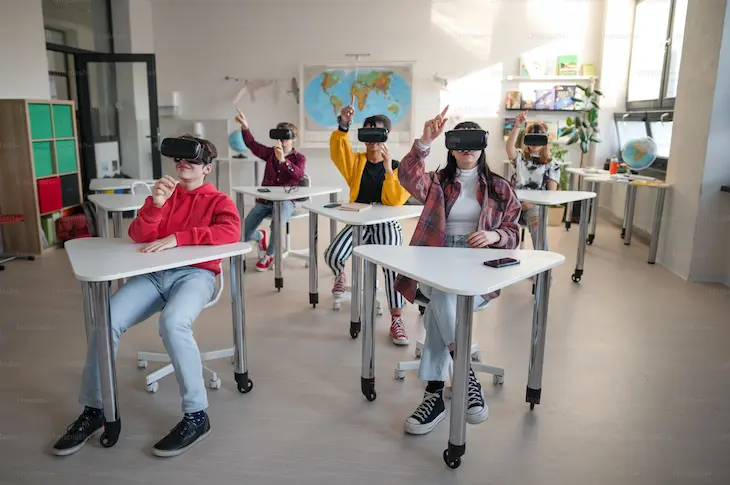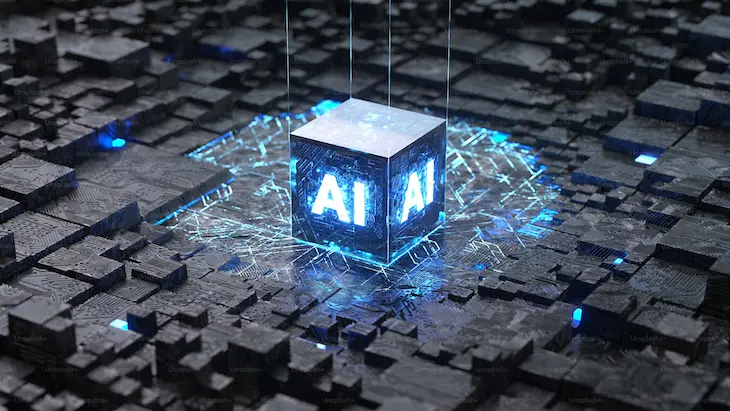The intersection of education and technology has been happening for decades now. However, recently, it has reached a pivotal stage with the integration of Artificial Intelligence (AI). As we stand on the edge of a new era in technology and academia, the role of artificial intelligence in education is transforming how we teach and learn. So far, we can mainly speculate on ‘how will AI affect education?’ However, it is evident that many changes are coming, and students are at the frontline of those transformations.
Most students already use AI in their school assignments and learning processes by relying on AI to complete their research by submitting papers written by bots. But how is AI helpful to students, and what should we expect in the educational field in the future? This is how the latest technology affects the study process and what to expect.
How Does AI Affect Education?
For anyone wondering, ‘What is AI in education? Picture a classroom where learning is not confined to textbooks and chalkboards but extends into a digital realm where technology acts as a trusted companion. In 2025, the educational system is undergoing a student-centric revolution with artificial intelligence (AI) integration. Virtual classrooms are no longer bound by physical walls. Instead, they become dynamic spaces where AI-driven features tailor learning experiences.
Yet, the emergence of intelligent tutoring systems, virtual classrooms, and adaptive learning platforms already raises the question, “Can AI and education coexist together, and will one replace the other?” Of course, this technology is not here to replace teachers but to enhance their roles, automating routine tasks and allowing them to focus on what they do best – inspire and guide students. This evolution brings flexibility, breaking down geographical barriers and fostering global connections. Still, the whole AI education project may bring changes to academia far beyond our imagination.
Benefits of AI Tools in Education
Integrating AI tools in education brings a few benefits that enhance the learning experience. Personalization becomes a norm as AI adapts content delivery to individual learning styles, creating a more inclusive and effective learning environment.
AI tools also open new frontiers for collaboration and global connectivity. Virtual classrooms, powered by AI, transcend geographical boundaries, enabling students to collaborate on projects with peers worldwide.
Furthermore, analyzing vast datasets by AI systems allows educators to identify learning trends and areas requiring additional attention. This data-driven approach enables timely interventions, ensuring students receive the support they need to succeed.
Challenges and Concerns
The potential integration of AI comes with numerous challenges and concerns worth examining. For example, there is a concern about the impact of AI on creativity and critical thinking. Striking the right balance between leveraging AI for teaching, assisting, and nurturing independent thought is challenging. The fear is that an overreliance on AI tools might hinder the development of essential skills, such as creative and critical thinking, independent learning, and others. Students may become accustomed to relying on automated solutions without fully understanding the underlying concepts or lessons they should master with each assignment.
Privacy is another significant concern. The collection of vast amounts of student data also raises questions about data security and the responsible handling of sensitive information. Transparent policies and robust security measures are crucial to addressing these concerns and building trust in using AI in education.
Student Perspectives
Understanding how students perceive and interact with AI education software is integral to its successful integration.
From a student perspective, AI offers a personalized, engaging, and enhanced learning journey that caters to individual needs, preferences, and study goals. For instance, AI can provide additional support or more challenging tasks based on a student's progress. Students also hope to maximize their learning potential using AI tools for more repetitive or routine tasks. For example, completing research, correcting grammar, proofreading and revising homework, etc.

The Role of Educators and Institutions
AI tools are only as good as the data they are trained on. Educators and institutions must step up and become the safeguards in introducing AI technology to classrooms. The responsibility extends beyond adopting AI tools to actively participating in their development, implementation, and ongoing refinement. For instance, if the data used to train these tools contain biases, it can result in biased content. It is up to educators to censor the given answer and reduce any harmful stereotypes or incomplete data.
Institutions must establish clear ethical guidelines for using AI in education. It should overview issues such as data privacy, algorithmic transparency, and areas of use to ensure responsible deployment of AI tools.
Looking Ahead: Future Trends
The fast integration and refinement can result in a completely new learning environment, changing the foundations of education that haven't been transformed for centuries.
For example, one major fast-approaching change is the integration of augmented reality (AR) and virtual reality (VR) into the learning processes. These immersive technologies can create dynamic and interactive learning environments, forever minimizing the limitations of traditional classrooms. Imagine students exploring ancient civilizations through VR or conducting virtual science experiments in an AR-enhanced laboratory, fostering engagement and deepening their understanding of complex subjects.
At the same time, AI may create the future trend of gamification of educational processes, making it harder for young people to study without engaging in simulations. There is a risk that students may focus more on gaming aspects rather than the actual learning content, leading to a superficial understanding of the material.
Also, AI's growing influence in education may enhance the global learning gap. Students from economically disadvantaged backgrounds may not have access to the latest technology or high-quality AI tools. This creates a digital divide, where some students benefit more from these tools than others, emphasizing disparities in learning opportunities.
Final Thoughts
While integrating AI tools into education holds significant promise, careful consideration of potential drawbacks is essential. Issues such as overreliance on automation, disparities in access, privacy concerns, diminished personal connections, and others should highlight the complexity of introducing such a novel, under-researched technology as AI. Teachers, in particular, may look out for instances of AI-generated content in assignments and penalize those using it, leading to lower grades overall.
AI's content production quality can also vary considerably; AI systems may produce outputs lacking the depth, nuance, or accuracy necessary for academic assignments. Relying solely on AI-generated output without critical evaluation may result in subpar work that fails to meet educational standards and negatively affects student performance.
In summary, while AI can provide invaluable support, students must exercise caution when using AI as part of their academic experience in order to maximize quality academic output.




